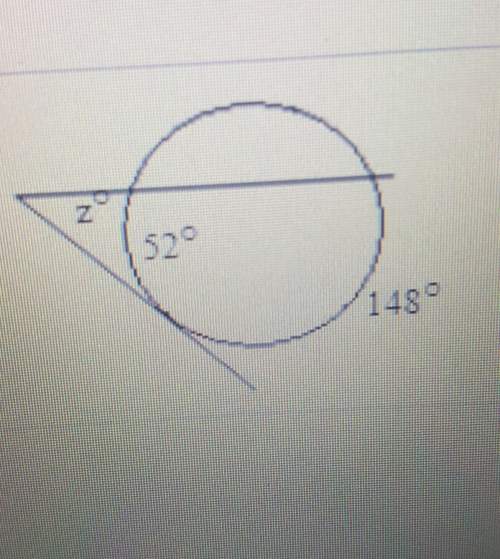
Mathematics, 25.01.2021 20:30 Briza19
NFL’s Passer Ratings
On this worksheet you will find out how players are given a passer rating in football and the formula behind it. Show all work for credit.
INTRODUCTION
Green Bay Packers fans were treated to the best performance in Aaron Rodgers' career Sunday – at least by one metric – when he delivered a perfect quarterback rating of 158.3 in a 42-24 win over the Oakland Raiders. It's the first time a Packers quarterback has finished a game with a perfect mark.
In 2008, there was but one quarterback — the Chargers’ Philip Rivers — who notched a season-long passer rating higher than 100. Eight years later, there were five quarterbacks with appreciable playing time who surpassed that figure. Twelve additional signal-callers broke the 90-barrier.
With 158.3 denoting a perfect passer rating, it means–more so than at any previous point in history–that quarterbacks are closer to perfect than they’ve ever been. If you want a perfect passer rating in a game, you must at LEAST complete 77.5% of your passes, pass for 12.5 yards per attempt, throw one touchdown for at least every 8.421 attempts and throw zero interceptions.
Against Oakland, Rodgers threw zero interceptions, completed 81% of his passes (25 of 31), passed for 13.8 yards per attempt (429 yards in 31 tries) and had a touchdown for every 6.2 attempts (five in 31 tries). He fits the bill.
FORMULA MODEL STEPS:
It’s important to know that the passer rating is compiled of four main stats: percentage of completions, touchdown passes, interceptions per attempt and average gain per attempt. The highest number a passer can achieve in these four categories — through the formula, you will see in a few moments — is 2.375
1) Subtract 0.3 from the completion percentage (as a decimal) and multiply that number by 5. If you get a number less than zero, then the number for this section is zero. If the result is more than 2.375, then that is the number assigned.
The league likes to use Peyton Manning’s 2004 season as an example in these matters. Manning completed 67.6 percent of his passes that year. When the above formula is applied, the result is 1.880. Keep that number handy, for it will be needed later.
2) Subtract 3 yards from the average yards per pass and multiply that by .25
In 2004, Manning threw for 4,557 yards on 497 attempts. That’s 9.17 yards per attempt, which — when Step 2 is applied — turns into 1.543.
3) Multiply the touchdown percentage (as a decimal) by 20. As in Step 1, if the result is greater than 2.375, then that is the number assigned.
But that wasn’t the case with Manning, whose biggest year ever featured 49 touchdown passes out of 497 throws. The touchdown percentage was 9.86 percent, which turns into 1.972.
4) Multiply the interception percentage (as a decimal) by 25 and subtract the resulting number from 2.375. If the result is less than zero, then zero is the resulting number for this step.
Manning threw 10 interceptions out of his 497 throws for a 2.01 percent reading. Applying Step 5, the result is 1.872.
5) Take the resulting numbers from Steps 2 through 5 and add them together.
You will get 7.267.
6) Divide the Step 5 result by six and multiply that result by 100
You should have come up with Manning’s passer rating for 2004, 121.1
All together the formula can be used like this:
INTERPRETING RESULTS
The league average in 2009 was 83 and it has steadily risen from there. In 2018, it was 92.9, and it was at 91.2 heading into Week 7.
The fifth-best QB rating last year was 105.5 and the 10th was 99.7, so that essentially represents the top third of the league.
The worst passer in the league last year was Arizona's Josh Rosen at 66.7.
In 2017: 100.5 was fifth-best, 95.4 was 10th-best, and 60.5 was worst (DeShone Kizer, ouch), with 69.2 as next-worst.
2016: 101.7 is fifth, 95.6 is 10th, 69.6 the worst.
Basically, if you're not in the 90s, you're in the bottom half of quarterbacks in the league, at least in modern single-season measurements. To be elite in a given season, you need to be in the 100s. Top-third quarterbacks are at 95.
Rodgers entered Week 7 at 92.8 for the season, just barely ahead of league average.
PRACTICE
1)
Player=
Percentage of completions =
average gain per attempt=
Touchdown passes per attempt=
interceptions per attempt =
Work:
Passer Rating=
Interpretation:
2)
Player=
Percentage of completions =
average gain per attempt=
Touchdown passes per attempt=
interceptions per attempt =
Work:
Passer Rating=
Interpretation:
3)
Player=
Percentage of completions =
average gain per attempt=
Touchdown passes per attempt=
interceptions per attempt =
Work:
Passer Rating=
Interpretation:

Answers: 3
Another question on Mathematics

Mathematics, 21.06.2019 13:00
You download a video game to your computer. you have a 60-minute free trial of the game. it takes 5 1/6 minutes to set up the game 7 1/3 minutes to play each level. you want to find out how many levels you can play for free.which inequality describes the number of levels, l, you can play in 60 minutes? can you play 6 levels during your free trial? i need ,
Answers: 3

Mathematics, 21.06.2019 17:30
What is the number 321,000,000 in scientific notation? also what is the number? ?
Answers: 2

Mathematics, 21.06.2019 20:30
Solve each quadratic equation by factoring and using the zero product property. 14x - 49 = x^2
Answers: 2

You know the right answer?
NFL’s Passer Ratings
On this worksheet you will find out how players are given a passer rating in f...
Questions





English, 16.06.2021 18:30

Mathematics, 16.06.2021 18:30

History, 16.06.2021 18:30


Biology, 16.06.2021 18:30

Computers and Technology, 16.06.2021 18:30

English, 16.06.2021 18:30




History, 16.06.2021 18:30

Mathematics, 16.06.2021 18:30


History, 16.06.2021 18:30






